which translates to English as an "S"
Wednesday, May 9, 2012
1988-89 Spartak Moscow Yuri Yashin Jersey
Founded back in 1925 as a physical culture and sports society of union workers in the Soviet Union, the Spartak Moscow Sports Society draws it's name from the famed gladiator Spartacus, a famous leader of Greek slaves in an uprising against the Romans.
The famous Spartak logo, with a Cyrillic "C",
which translates to English as an "S"
which translates to English as an "S"
It was a many faceted society, with it's athletes eventually competing in gymnastics, track and field, basketball, boxing, skiing, figure skating, handball, speed skating, tennis and it's well known football club FC Spartak Moscow. It's hockey club, HC Spartak Moscow was formed in 1946. For their first seven seasons they competed in the Soviet Championship League, finishing second overall in only their second season with a 14-2-2 record.
A poor season in 1952-53 saw Spartak relegated to the second division of Soviet hockey for the 1953-54 season, but their stay was a short one, as they earned a promotion back to the top level in only their second try in 1954-55.
Once back in the top level, Spartak were there to stay for the next 46 years. After six seasons of generally moderate success, Spartak put together a dominating season in 1961-62 when they tore through the league with a 31-4-3 record on their way to their first Soviet League Championship.
The 1962 Soviet champions Spartak Moscow
That title signified Spartak's arrival as one of the "big four" of Soviet Hockey, along with Central Red Army (CSKA), Dynamo Moscow and Soviet Wings, with the difference being their popularity, as Central Red Army was the sporting club of the Soviet Army, Dynamo being sponsored by the KGB and Wings being affiliated with the Soviet Air Force, while Spartak was the club of the working people. Those four clubs would combine to win 43 out of 46 Soviet Championship League titles between 1947 and 1992.
With the stringent rules regarding freedom of speech, particularly when it came to criticism of the government in general and the ruling Communist Party in particular, supporting Spartak was one of the very few times the citizens of the Soviet Union could openly cheer in public against the oppressive government which controlled so many aspects of their lives.
Spartak's fans enthusiastically cheering on their club
Following their championship in 1962, Spartak would not finish outside the top four until 1977, a span of 15 seasons. Their second championship would arrive in 1967 after a spectacular 38-3-3 season, followed by a third in 1969.
The dominant Spartak Moscow championship team from 1967
In addition to their league championships, Spartak would win back to back Soviet Cups in 1970 and 1971, which was a season long knockout competition for clubs from various levels of play held concurrent to the Soviet League regular season.
Spartak Moscow's 1971 Soviet Cup winning team
Spartak also was competing in Europe at this time, winning the Ahearne Cup for three consecutive years in 1971, 1972 and 1973 as well as adding a Stars Cup in 1975.
Spartak again became Soviet champions in 1975-76, their fourth and final Soviet championship. They would suffer their first losing record since 1960 when they went 14-18-4 in 1978, but quickly returned to form for the next decade, which saw them compete in the Super Series in 1978 against five NHL clubs, winning three against the Colorado Rockies, St. Louis Blues and Atlanta Flames.
Spartak's fourth championship team in 1976
The club would also capture the prestigious Spengler Cup five times in 11 years, with those coming in 1980, 1981, 1985, 1989 and 1990 while defeating clubs from Czechoslovakia, Switzerland, Canada and Sweden. During this time period Spartak would also host the Washington Capitals in 1989 and the Minnesota North Stars in 1990.
The game program from Spartak vs. Minnesota in 1990
The Soviet Union would cease to exist in late 1991, which threw the world of Russian hockey into a period of transition and turmoil, as the teams attempted to form new leagues, which were somewhat evolutionary for a period of time. Still, it was the same core group of traditional clubs competing against each other regardless of the name of the league, which
was known as the CIS Championship in 1991-92, the International Hockey League from 1992 to 1996 and the Russian Hockey League/Russian Superleague from 1996-97 to 2007-08.
After a pair of third place finishes in the post-Soviet era, Spartak began a downward slide to 8th in 1994, 9th in 1995, 14th in 1996 and 17th in 1997. They rebounded with a 9th place finish only to bottom out with a 19th place finish in 1998-99, which saw them relegated for the first time since 1953.
On their second try in the Vyssshaya Liga, Spartak won the league championship in 2000-01, and were promoted back into the Russian Superleague. During their first season back they managed to avoid relegation with an 11th place finish, but a 15th place finish the following season saw them back in the Vysshaya Liga once more.
A first place finish in the Western Conference earned them a top seed in the playoffs, and the cruised to the playoff finals with a 9-1 record. Although they lost in the finals, it was enough to gain a promotion back to the RSL once again.
They played another two seasons in the Superleague, but their financial situation was worsening. Businessman Vadim Melkov agreed to help the club secure the much needed sponsorship, but any arrangements which were in the works died along with Melkov when he was killed in a plane crash in July of 2006. After attempting to improve their situation, it was decided by team management to sit out the 2006-07 season.
Fortunately, the club returned to the ice for the 2007-08 season, the final one for the RSL, as a new league was on the horizon, promising better times ahead.
That new league was the Kontinental Hockey League, which began play in the 2008-09 season with Spartak Moscow being placed in the Bobrov Division, where they finished third out of six clubs, qualifying for the postseason, where they would win their first playoff round.
In 2009-10, Spartak posted their third consecutive winning record in the KHL and again came third in the reconfigured Bobrov Division, again winning their opening round playoff series. 2010-11 was yet another third place in the division and a return to the playoffs.
In their most recent season, Spartak finished below .500 and missed the playoffs for the first time as a member of the KHL with a ninth place finish in their conference, where eight teams would advance to the post season.
While their days as one of the "Big Four" seem behind them, they have rebounded from the brink of extinction to carry on their legacy as the team that was once the most popular club in the nation.
Notable players to have skated for Spartak during their over 65 year history include former NHLers Stefan Ruzicka, Danny Markov, Alexander Selivanov, Vitali Prokhorov and Nikolai Borschevsky. Spartak made headlines in 2010 when they signed legendary 45 year old goaltender Dominik Hasek, who played the final of his 31 seasons with the club.
The best known Spartak alumnus is current NHL star Ilya Kovalchuk, who played for Spartak during the 1999-00 and 2000-01 seasons, which was highlighted by his 18 points in 12 playoff games as Spartak won the Vyssshaya Liga playoff championship to earn promotion back to the Russian Superleague before he joined the Atlanta Thrashers of the NHL the following season.
Ilya Kovalchuk while with Spartak in 2000-01
Today's featured jersey is a 1988-89 Spartak Moscow Yuri Yashin jersey from the season of their fourth of five Spengler Cup victories. Yashin was a defenseman with Spartak from 1987-88 through 1992-93. After one season in Sweden, he returned to Spartak for 1994-95 and go on to play three more seasons in Russia before his career came to a close.
This jersey is a prime example of late Soviet-era jerseys, constructed of a mid-weight mesh material with heavy white silk screening of the name, numbers and stripes, with only the white of the shoulders being a separate white fabric sewn into the jersey.
The jersey also has some interesting design features, such as the fonts for the sleeve numbers not matching the ones on the front and back and the uphill angle for the sash on the front which contains the team name, which runs uphill counter to the traditional style employed by most clubs.
Being game used, it also possesses the unique "funk" of a game worn Soviet jersey, which we recommend keeping far away from your better half!
Today's video segment begins with fantastic footage of Spartak Moscow winning their first championship in 1962.
Here is a look at the dominant Spartak Moscow club from 1967. Don't miss the brief appearance of the metal water jug on the bench.
Next, a look at the championship team from 1976. Apparently color film had not arrived in the Soviet Union in the mid-1970's!
Finally, a look at the modern Spartak Moscow with a preview of the 2010-11 season, capturing the excitement of the current day club and it's fans.
Labels:
Spartak Moscow
Subscribe to:
Post Comments (Atom)


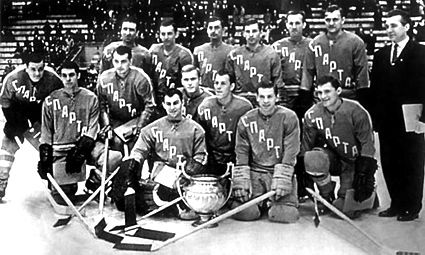
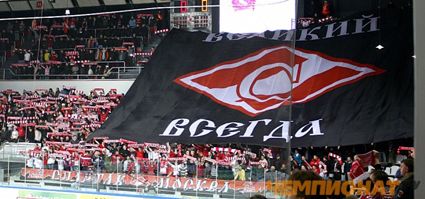
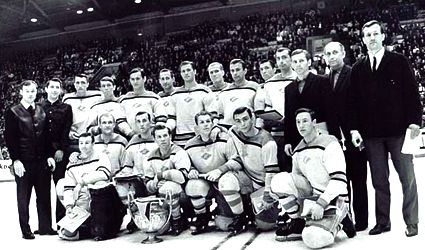
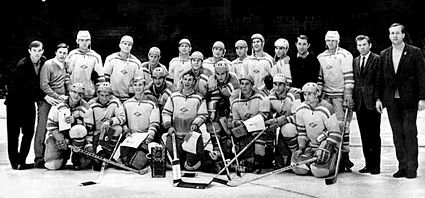

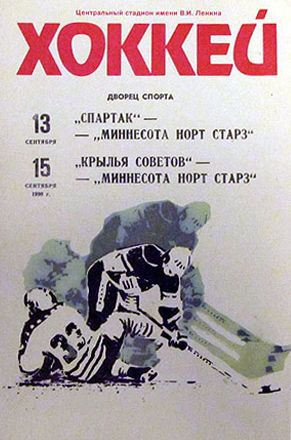
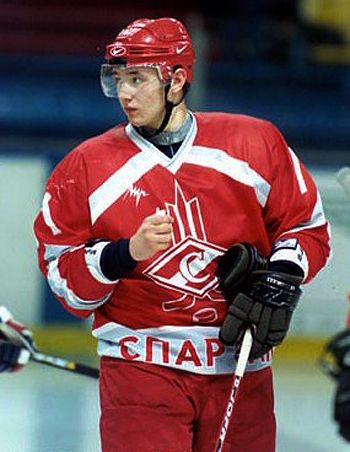












No comments:
Post a Comment
We welcome and encourage genuine comments and corrections from our readers. Please no spam. It will not be approved and never seen.